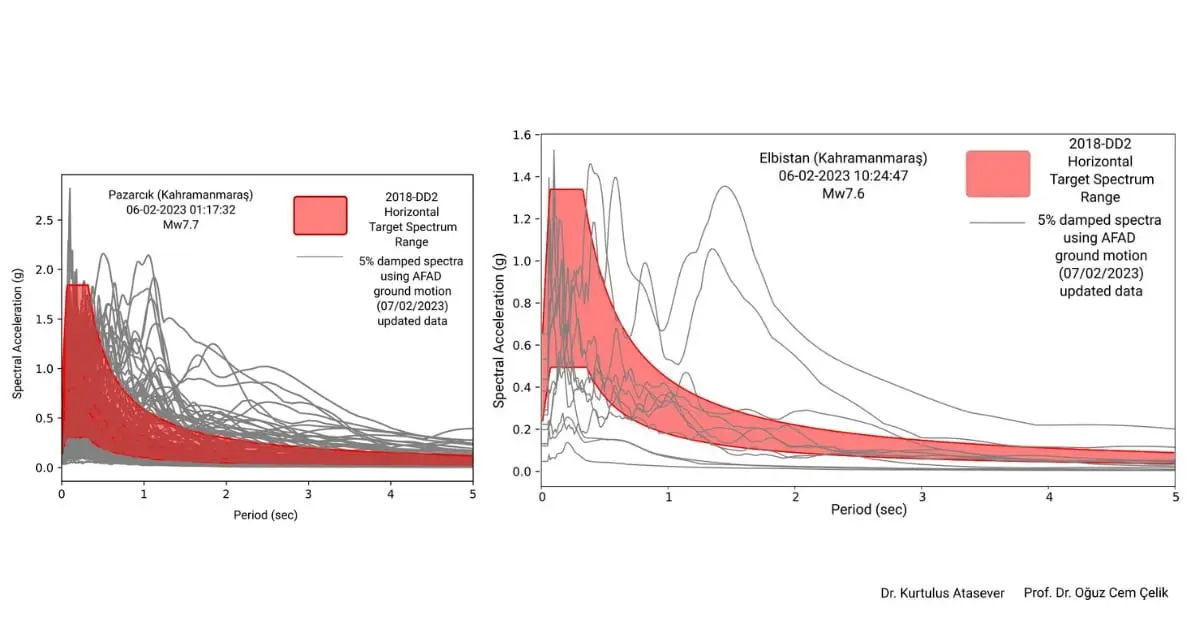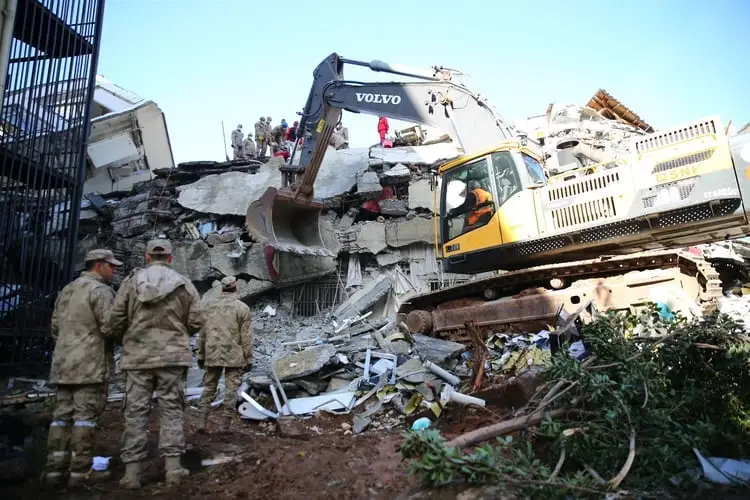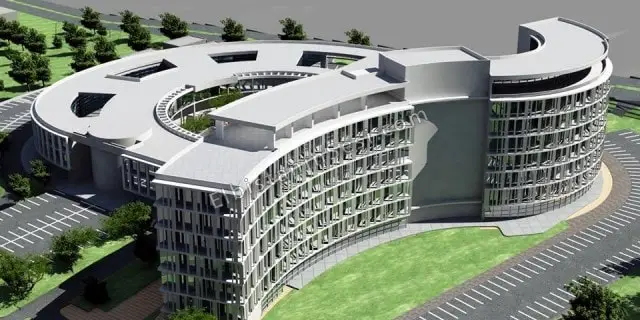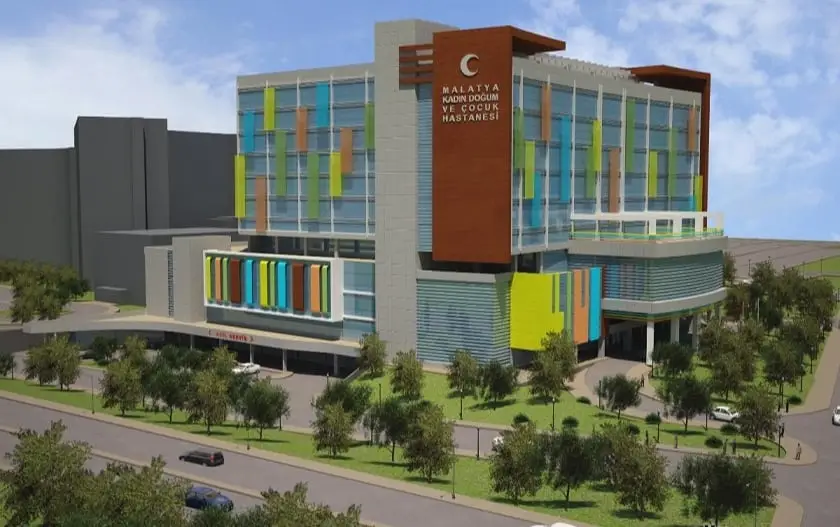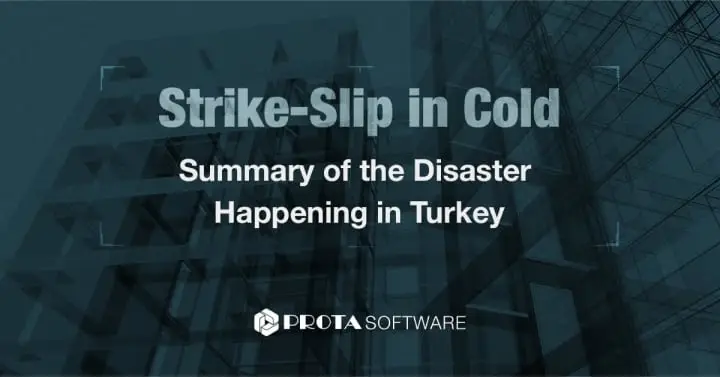
Strike-Slip in Cold – Summary of the Disaster Happening In Turkey
Turkey February 6 Earthquake: Insights and Aftermath
On the morning of February 6, the nation awoke to devastating news: a 7.8-magnitude earthquake had struck the Southeast region of Turkey at 04:17 a.m. Tremors were felt in numerous cities, including the capital, Ankara. Reports soon confirmed the collapse of buildings in ten regional cities, marking the start of a race against time. This event, now known as the Turkey February 6 Earthquake, has left an indelible mark on the region and the world.
Technical Details of the Turkey February 6 Earthquake
The moment magnitude of the mainshock was determined as 7.7 at an epicenter depth of 8.6 km. This earthquake recorded high spectral acceleration values, challenging the design capabilities of many structures. Earthquake engineers Prof. Dr. Oguz Cem Celik and Dr. Kurtulus Atasever compared these values with code-based spectra and confirmed that most buildings experienced accelerations far exceeding their design limits.
The seismic activity originated at the intersection of the Anatolia, Arabian, and African tectonic plates. According to the United States Geological Survey, a magnitude 7.5 strike-slip earthquake can rupture fault lines up to 120 kilometers in length and 18 kilometers in width. Following the initial mainshock, over 300 aftershocks were recorded within three days, including a 7.6-magnitude earthquake in Elbistan. To date, more than 2,400 aftershocks have shaken the region.
Key Observations and Lessons Learned
Experts have described the Turkey February 6 Earthquake as one of the most significant seismic events to affect the region in over 500 years. Initial analyses identified the following factors as contributing to the extensive destruction:
- High peak ground acceleration and spectral acceleration exceeding design values.
- Structural irregularities and non-compliance with seismic standards.
However, some buildings withstood the disaster, demonstrating the critical role of proper design and adherence to seismic regulations. For instance, structures designed by Prota Engineering using seismic isolation systems and compliance with Turkish Seismic Regulations prevented collapse, ensuring life safety even during maximum-considered earthquakes.
Prota-Designed Buildings: A Testament to Seismic Safety
Prota Engineering has designed 15 hospitals with seismic isolation systems, including three in the affected region. These hospitals demonstrated remarkable resilience:
- Elbistan State Hospital: Featuring dual seismic isolation layers, it survived with no damage and remains operational.
- Malatya Maternity and Children Hospital: Protected its 300-bed capacity and continues to provide critical care.
- Adıyaman Hospital: Still under construction at the time of the earthquake, it also sustained no damage.
These buildings showcase the effectiveness of ProtaStructure software, which offers state-of-the-art seismic design capabilities. Hospitals like these highlight the importance of resilient infrastructure in disaster-prone areas.
The Human Toll and Path to Recovery Turkey February 6 Earthquake
The Turkey February 6 Earthquake caused immense loss of life and property. Over 30,000 people have died, and more than 6,000 buildings collapsed. Despite this devastation, international efforts have mobilized over 100,000 people for rescue operations, offering hope and relief to those affected.
Real-World Applications
Explore ProtaStructure‘s role in real-world seismic safety applications:
- Browse our Project Gallery for successful implementations.
- Read inspiring Client Success Stories to see how Prota’s solutions make a difference globally.
- Watch our Seismic Capabilities of ProtaStructure video on YouTube for an in-depth understanding.
Building a Safer Future
The Turkey February 6 Earthquake underscores the need for a commitment to seismic safety, proper design, and advanced engineering practices. Together, we can ensure that tragedies like this become a thing of the past. Let’s work toward a future where no one must endure such devastation.


